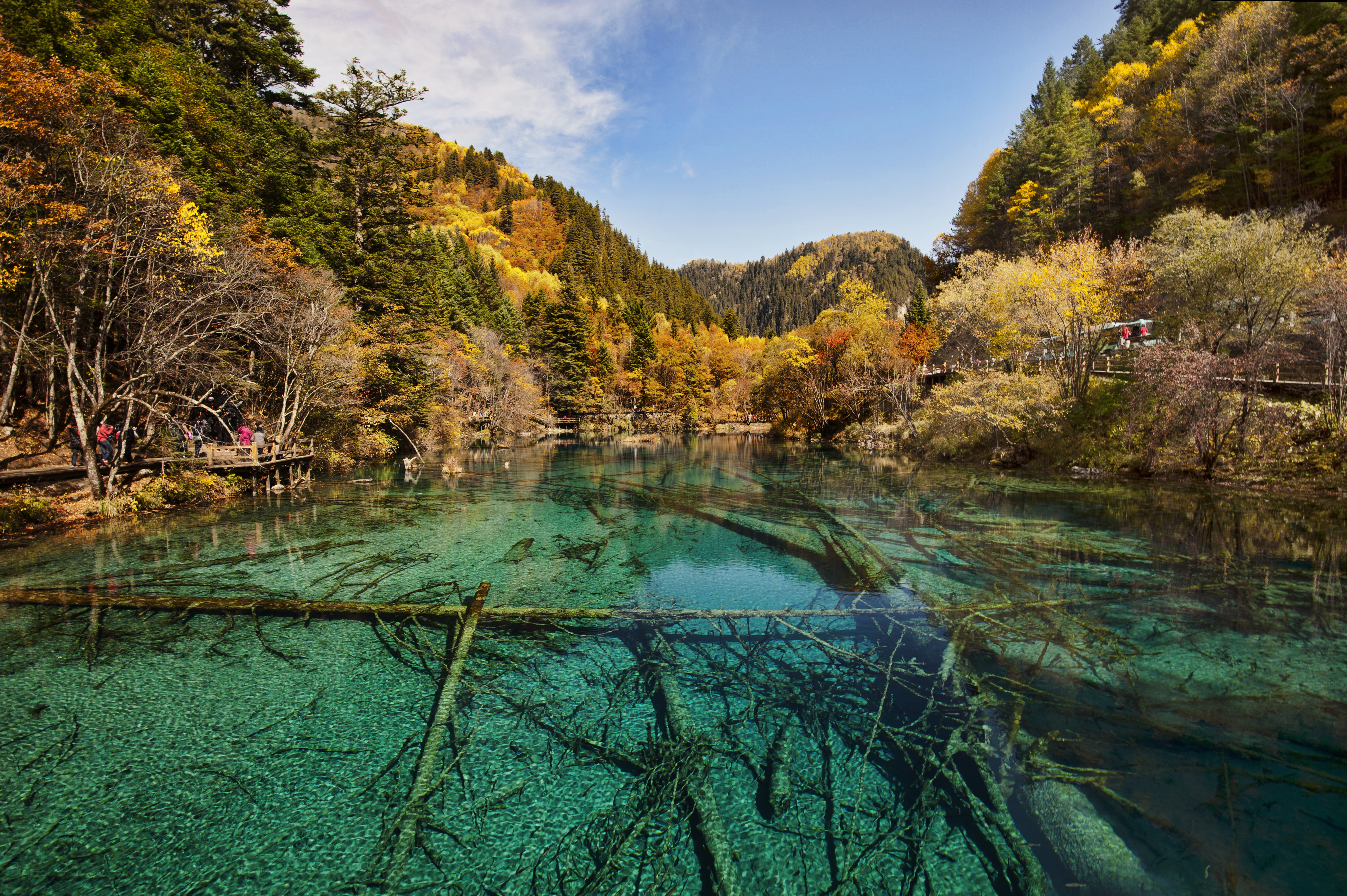
What is Jiuzhaigou Famous For?
The Jiuzhaigou Valley Scenic and Historic Interest Area is a reserve of exceptional natural beauty with spectacular jagged alpine mountains soaring above coniferous forests around a fairyland landscape of crystal-clear, strangely-colored blue, green, and purplish pools, lakes, waterfalls, limestone terraces, caves, and more. Located in the north of Sichuan Province, Jiuzhaigou is a land of waterfalls and lakes, its waters are the soul of the scenery.
Natural Wonders that Captivate the World
Jiuzhaigou is renowned for its stunning natural beauty, shaped by various geological wonders.
1. Multicolored Lakes
The most iconic feature of Jiuzhaigou is its collection of colorful lakes, locally called "Haizi." These lakes get their vibrant hues from a combination of factors:
- Mineral-rich Water: The water flowing from glaciers and underground springs carries dissolved minerals, particularly calcium carbonate, which creates the vibrant turquoise, blue, and green shades.
- Algae and Aquatic Plants: The lakes are home to diverse algae and aquatic plant life, which contribute to the water's coloration.
- Sunlight Reflection and Depth: The angle and intensity of sunlight, along with the depth of the lakes, influence how the colors appear at different times of the day and year.
Here's a table showcasing some of the most famous colored lakes in Jiuzhaigou:
| Lake Name | Distinctive Color | Notable Features |
|---|---|---|
| Five Flower Lake (Wuhua Hai) | Multicolored - Turquoise, Blue, Green, Yellow | Considered the most beautiful lake in Jiuzhaigou, its bottom is visible due to the exceptionally clear water, revealing fallen tree trunks. |
| Long Lake (Chang Hai) | Deep Blue | The largest and deepest lake in Jiuzhaigou, resembling a crescent moon. |
| Mirror Lake (Jing Hai) | Reflective, Mirror-like | Known for its exceptionally calm surface, which reflects the surrounding mountains and sky like a mirror. |
2. Majestic Waterfalls
The cascading waterfalls of Jiuzhaigou are another highlight. They vary in size and form, each offering a unique spectacle:
- Nuorilang Waterfall: The widest waterfall in China and a symbolic landmark of Jiuzhaigou.
- Pearl Shoal Waterfall: A wide, gently sloping waterfall that creates a curtain of water resembling scattered pearls.
- Hundred-Dragon Waterfall (Shuizheng Qunhai): A series of stepped waterfalls that cascade over limestone terraces.
3. Travertine Pools and Terraces
Jiuzhaigou features stunning travertine pools and terraces, formed over thousands of years:
- Travertine Pools: Calcium carbonate deposits from the mineral-rich water create beautiful pools with varying shades of blue and green.
- Travertine Terraces: These stepped formations, similar to the more famous Huanglong Scenic Area nearby, showcase the power of water in shaping the landscape.
Rich Cultural Heritage
Beyond its natural wonders, Jiuzhaigou is also home to a rich cultural heritage:
1. Tibetan Culture
The region is inhabited by the Tibetan people, and their culture is deeply intertwined with the natural environment. * Prayer Flags: Colorful prayer flags adorn the landscape, adding to the mystical ambiance. * Monasteries and Temples: Ancient monasteries and temples, such as the Zharu Monastery, provide insights into Tibetan Buddhism and local traditions. * Festivals: Jiuzhaigou celebrates various Tibetan festivals, offering a glimpse into their vibrant culture.
2. Unique Local Traditions
- Folk Songs and Dances: Jiuzhaigou has a rich tradition of folk songs and dances, often depicting the beauty of the natural surroundings and local legends.
- Handicrafts: Visitors can find unique handicrafts, including Tibetan carpets, jewelry, and religious artifacts.
FAQs
1. What is the best time to visit Jiuzhaigou?
Autumn (September-October) is generally considered the best time to visit Jiuzhaigou. The autumn foliage transforms the landscape into a riot of colors, complementing the turquoise lakes and waterfalls.
2. How do I get to Jiuzhaigou?
The most convenient way to reach Jiuzhaigou is to fly to Jiuzhai Huanglong Airport (JZH) from major cities in China. From the airport, buses and taxis are available to reach the park entrance.
3. Are there accommodations available within Jiuzhaigou National Park?
While overnight stays inside the park are limited, there are hotels and guesthouses available near the park entrances. It is advisable to book accommodations in advance, especially during peak season.